Visit to Wave Hill in New York City, Part 2
Wave Hill, an estate garden in the Bronx in New York City, which I visited on October 11, was romantically blowsy in the Pergola, Elliptical, and Flower Gardens near the entry. But it got a bit bolder, even Hollywood, in the Aquatic and Monocot Gardens.
These two gardens share a large, hedged “room” that visually separates them from the rest of the gardens. I’m nuts about those Dr. Seussian yuccas at the far end, their pincushion heads atop skinny trunks of varying heights. Like golden fireworks exploding against dark-green hedges, you can almost hear them going pow Pow POW! My daughter, standing with her umbrella, provides a sense of scale.
Although first frost couldn’t be far off, the pond plants were still full and lush. The water lily even had buds, though they were closed tight against the chilly rain.
Large, arching grasses with rosy plumes anchor each end of the pond…
…adding to the beautiful fall show.
Golden and variegated foliage cozies up to butter-yellow flowers for a nice color echo.
Clustered pots of tropicals by the bench offer sun-kissed color and bold foliage.
It’s formal symmetry done beautifully. The long pergola at the far end of the pond is part of the Monocot Garden.
I won’t bore you with the definition of monocot (the garden’s website explains; maybe you know, but I had to look it up). Let’s just say this garden is all about bold foliage.
Spiky and tousled heads of agaves in pots mingle with grasses, colocasia, bulbine, and other interesting foliage plants for a display that might even look at home in Austin.
Gourds dangle from the pergola, just begging to be turned into birdhouses.
Chartreuse foliage and a nearly black canna add to the drama.
We took shelter from the rain under the long pergolas that line each side of the pond garden.
No planting opportunity is overlooked, not even cavities in the toothy stone walls that edge the pergolas.
The two pergola walks lead to stunning focal-point containers backed by a green hedge and set amid a grassy groundcover. This may be toothless sotol (Dasylirion longissimum) with small succulents.
By now the rain was really coming down, so we ran up a shady path to a covered pergola, where we shook off the rain, sat on a bench, and admired the view.
That’s the Hudson River in the distance.
This is the Wild Garden, which, according to the garden’s website, “was inspired by the informally planted English wild gardens as championed by William Robinson (1838-1935), an influential nineteenth-century author and garden designer.”
Tiers of tall grasses and cane climb the hilly edge of the garden.
Lovely combos like these were starting to show fall color.
This meadowy, forest-edge view reminds me a bit of the Oudolf design on the High Line.
Just downhill from the Wild Garden, planted in the ruins of a former greenhouse, you enter the Herb and Dry Gardens.
Stone paving and walls retain and reflect heat and give this garden strong structure.
Climbing the stone stairs…
…you reach the Alpine House, where beautifully arranged troughs display rock-garden plants.
Just look at all these! They reminded me of an elegant, English version of my own succulent cinderblock-wall planter.
The effect is like a bonsai landscape.
Diminutive, gnarled trees in pots were ready to blaze into fall color too.
Inside the Alpine House, viewable through large, open windows, more rock-garden plants are displayed in pots amid artfully placed boulders.
Pitcher plants, hooded and open-mouthed like a chorus of cobras, enjoy a sunny spot on a wall nearby.
To escape the chilly rain, we had lunch in the cafe, located inside this lovely, old home.
Behind the other house on the property, beneath its rear terrace, we discovered this charming grotto pond.
A tall, trunking yucca or nolina out front reminded me of home, though it was incongruously set amid woodland-style shrubs.
A lawn sloped off to one side, framed by trees in pointilist, early-fall color.
Nodding, sleepy sunflowers were feeding a flock of birds until we walked up. Little bluestem was blushing at their knobby knees.
More fall color
As the rain pattered to a stop and the mist began to lift, we took a last long look at the view across the river. The Palisades and tall buildings on the opposite side were coming into clearer view.
On a drier day we’d have sat for a while in the Wave Hill chairs.
But I didn’t really mind the rain. It let us pretend the garden was ours for a couple of sweet hours.
Up next: An autumn stroll through New York Botanical Garden. For a look back at Part 1 of my visit to Wave Hill, click here. For my tour of the High Line park and garden in Manhattan, click here.
All material © 2006-2014 by Pam Penick for Digging. Unauthorized reproduction prohibited.


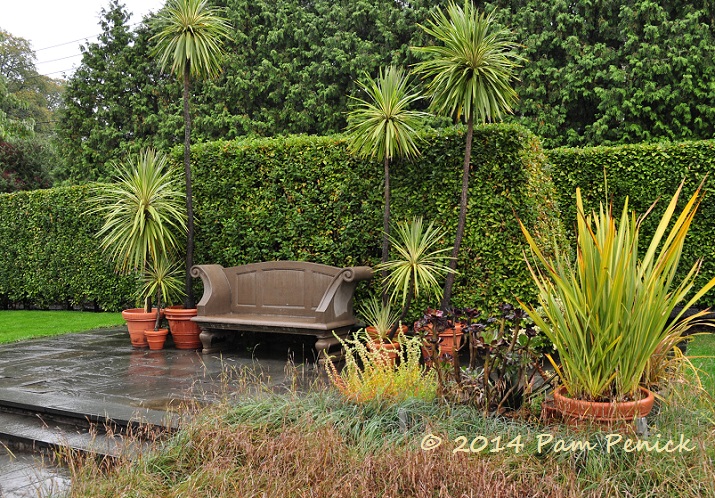
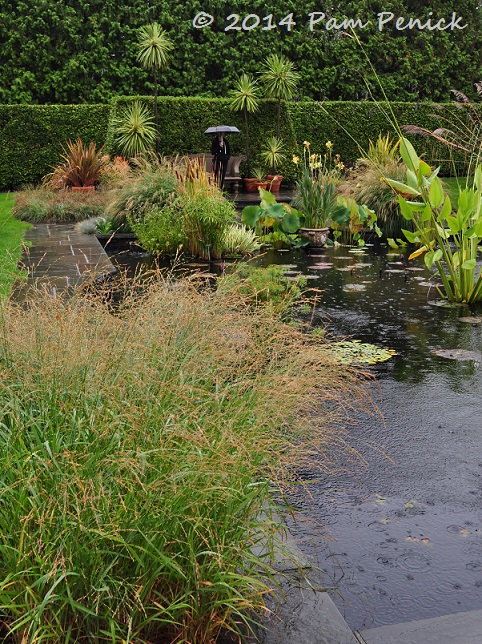
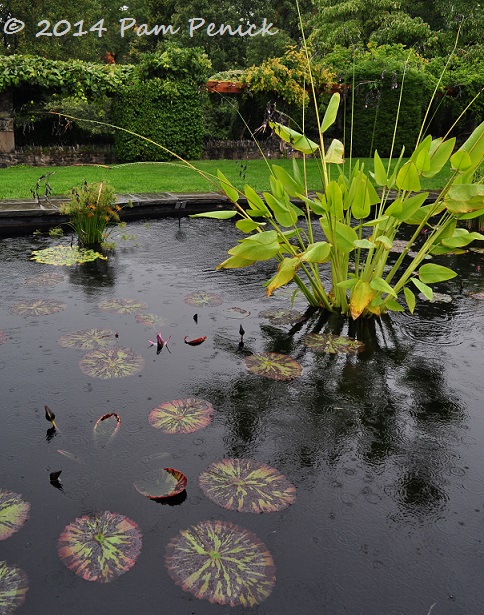
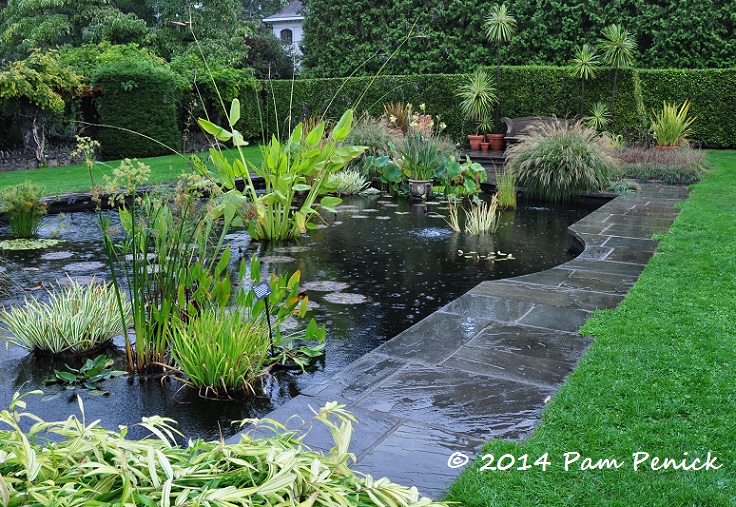
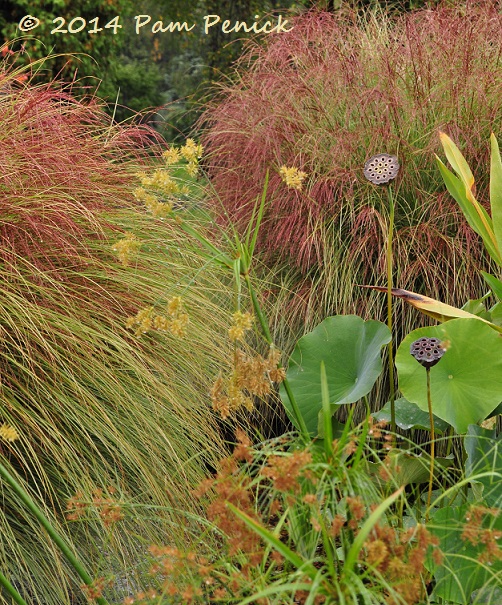
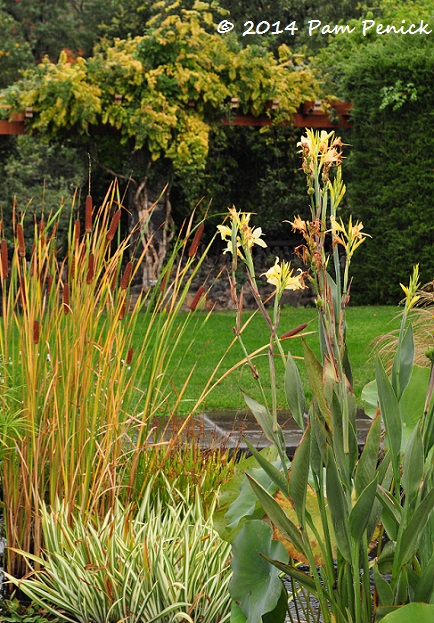
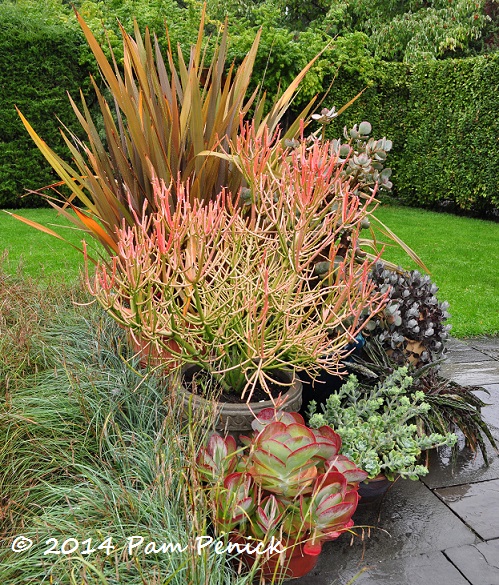
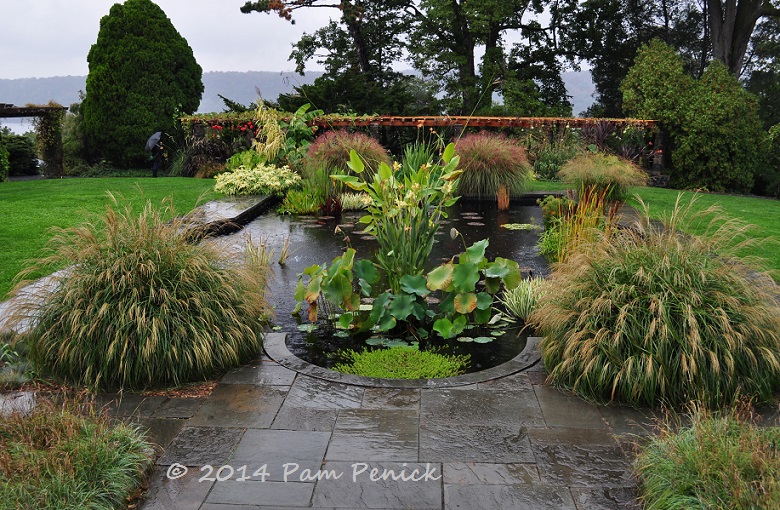
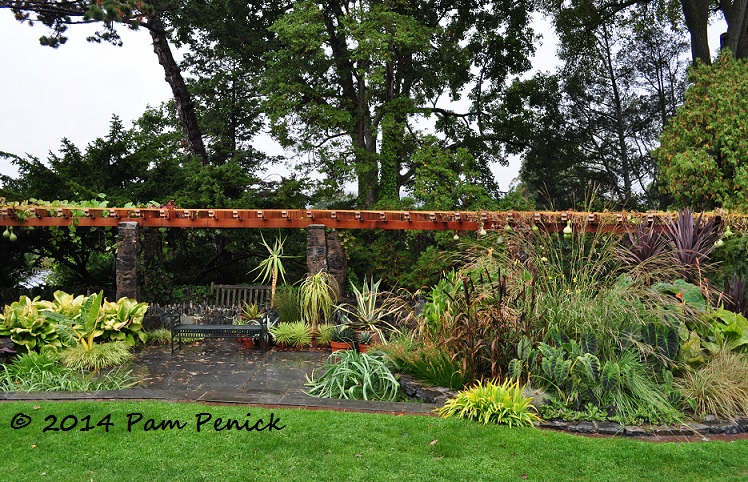
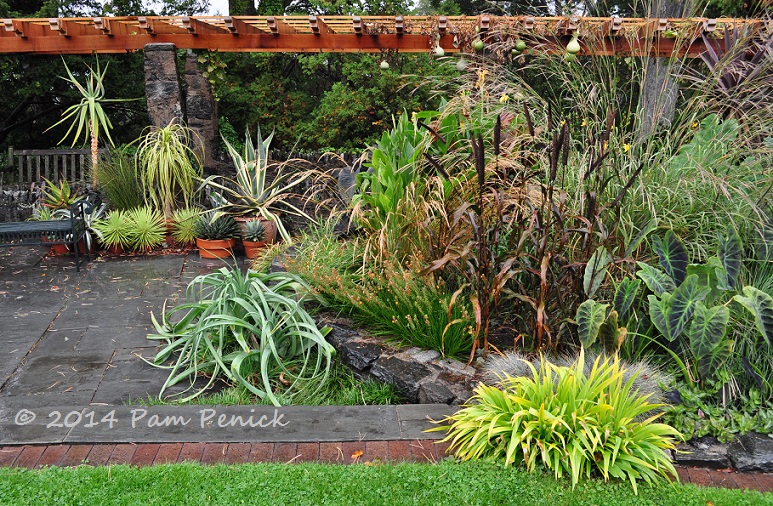
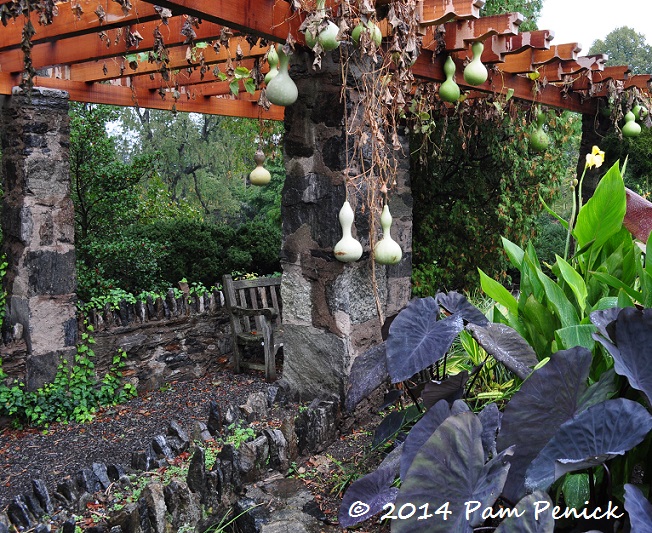
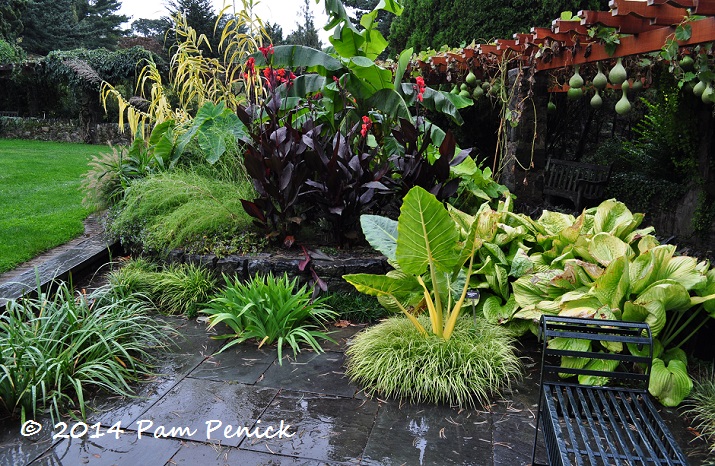
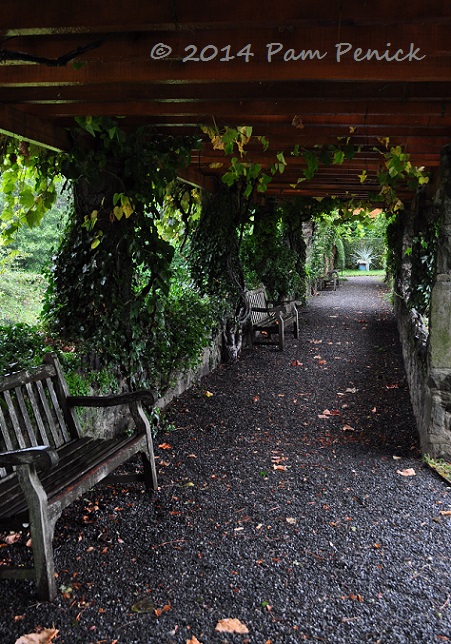
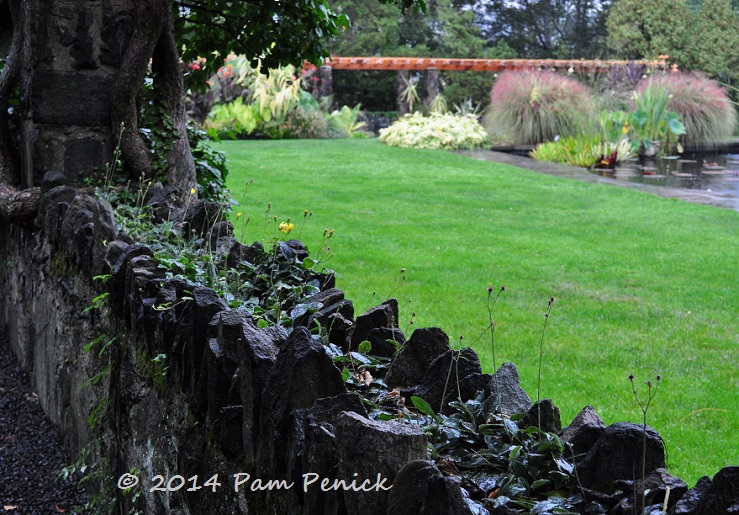
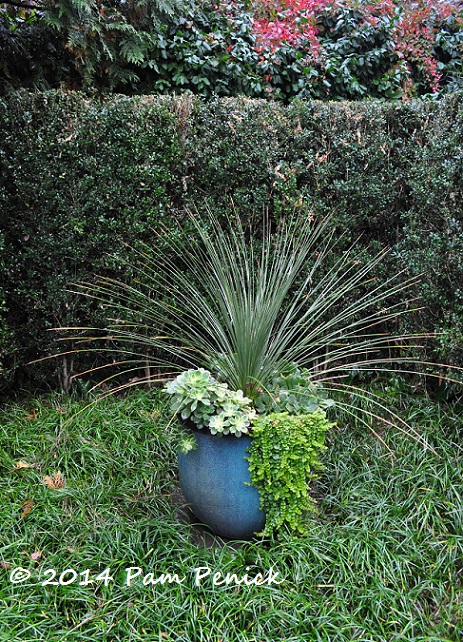
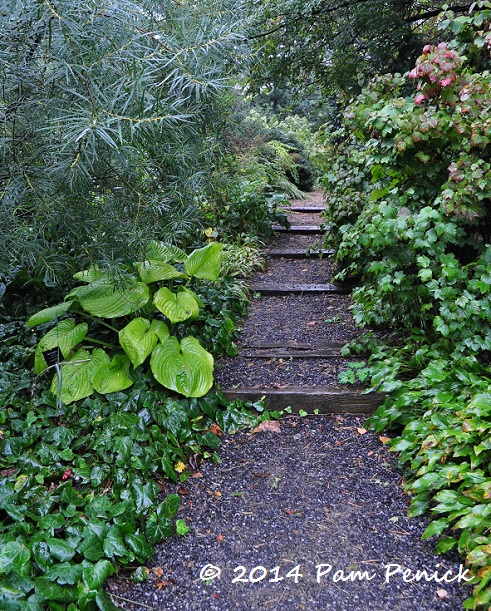
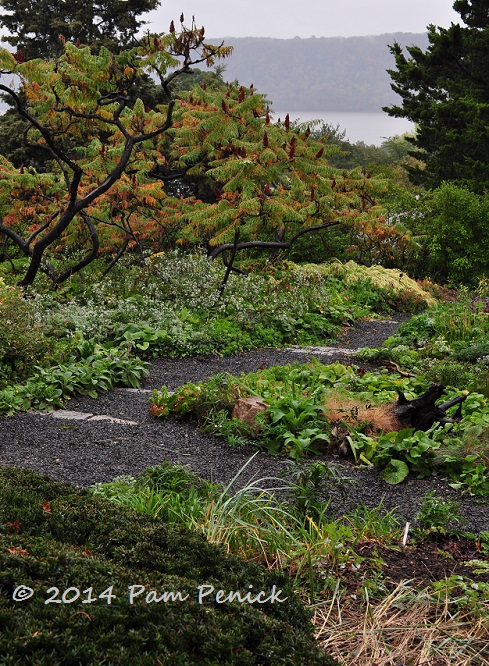
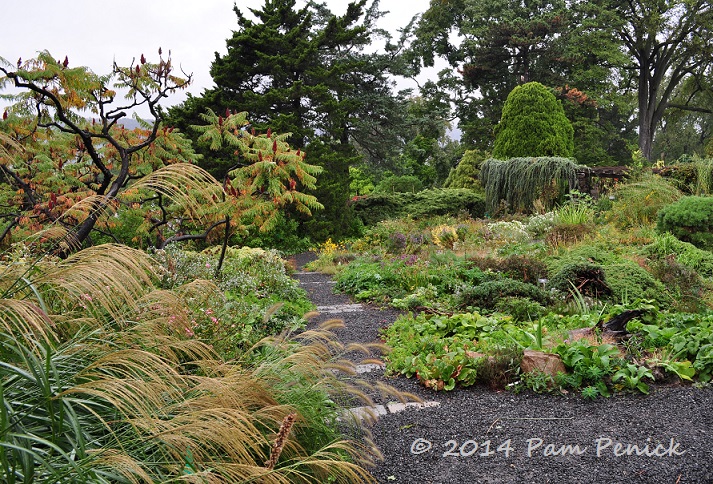
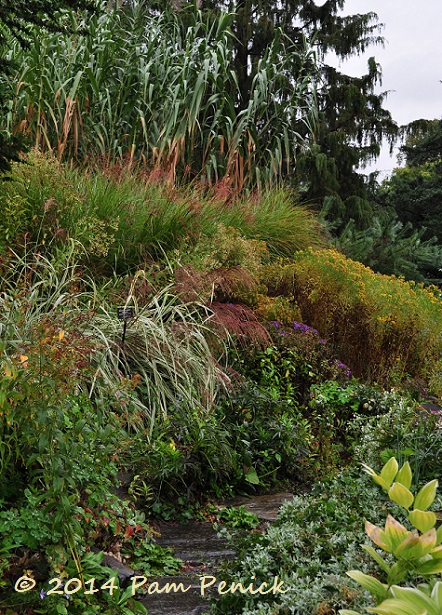
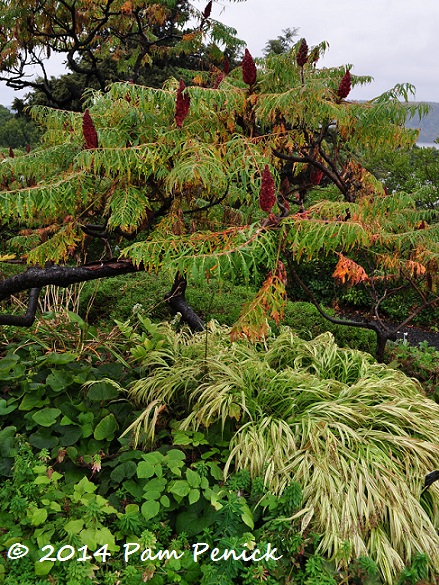
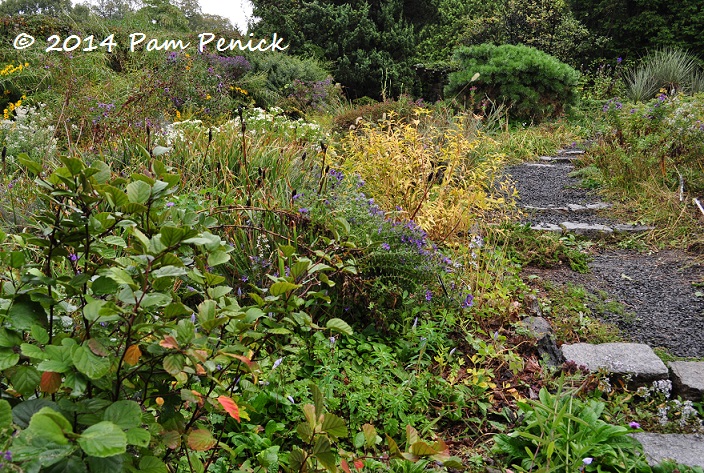
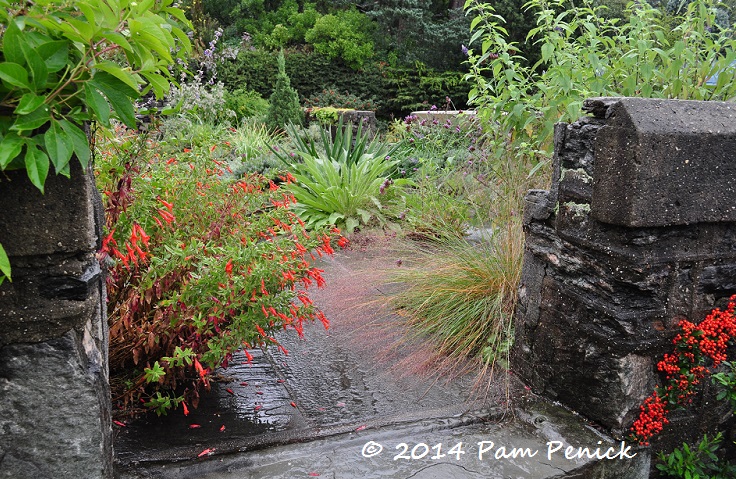
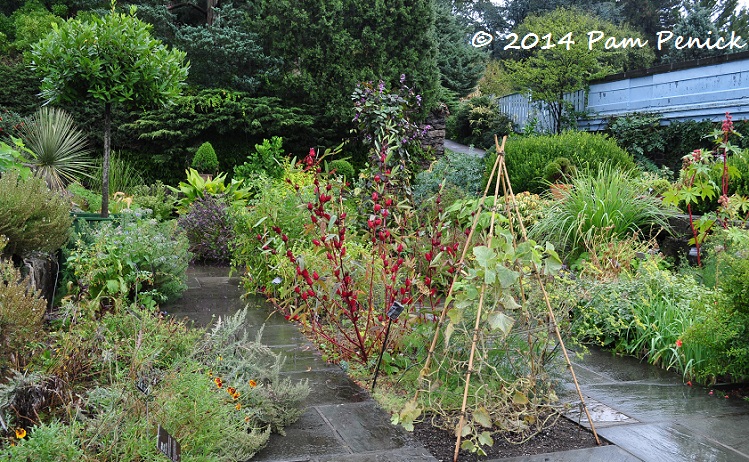
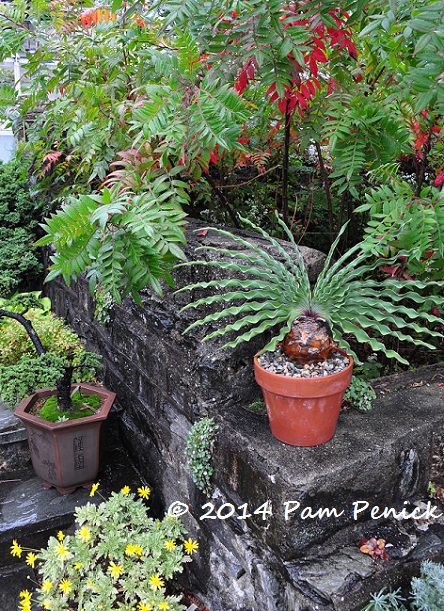
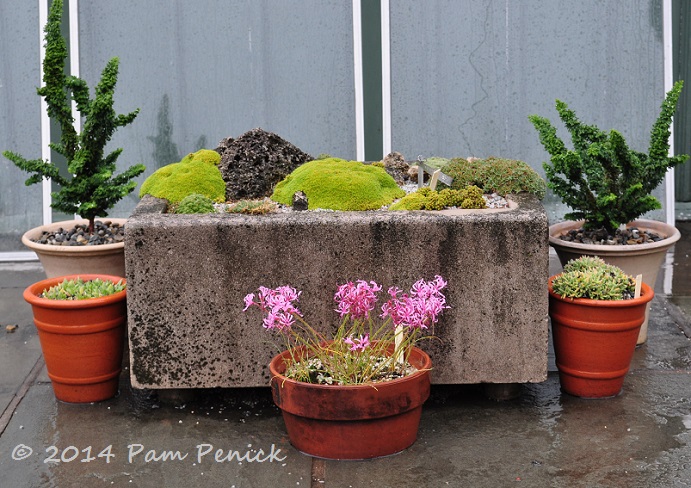
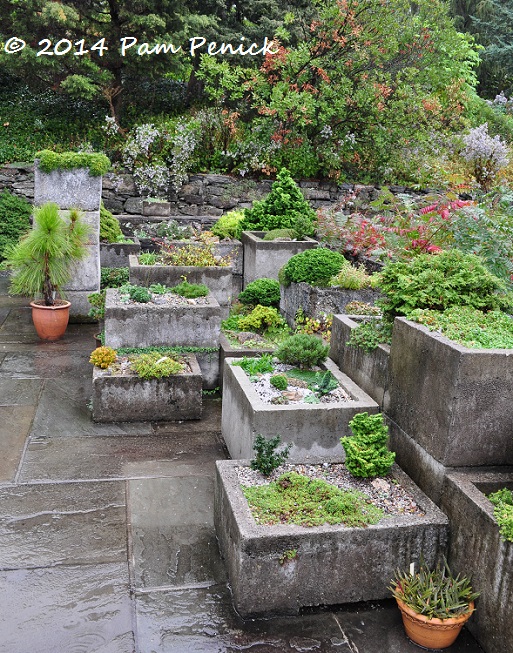
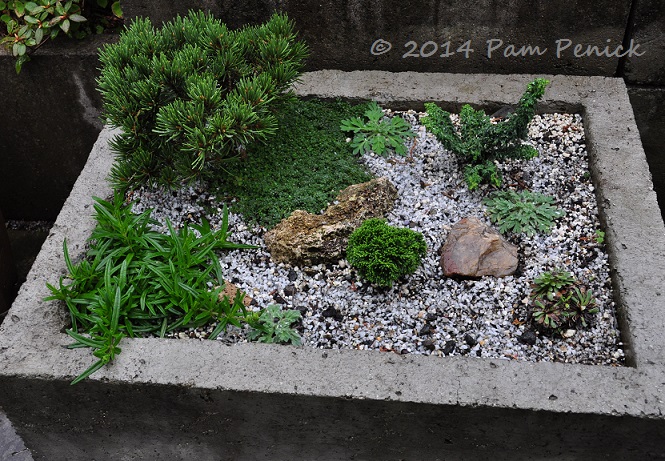
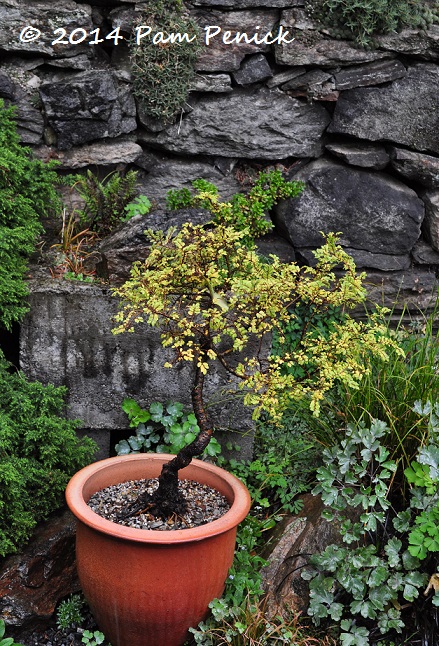
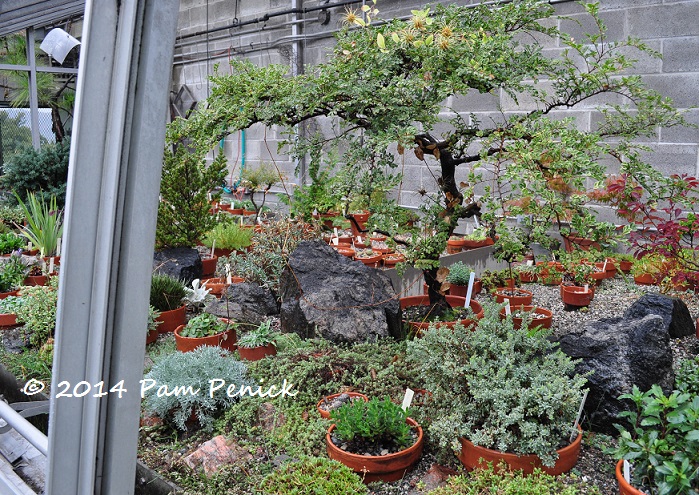
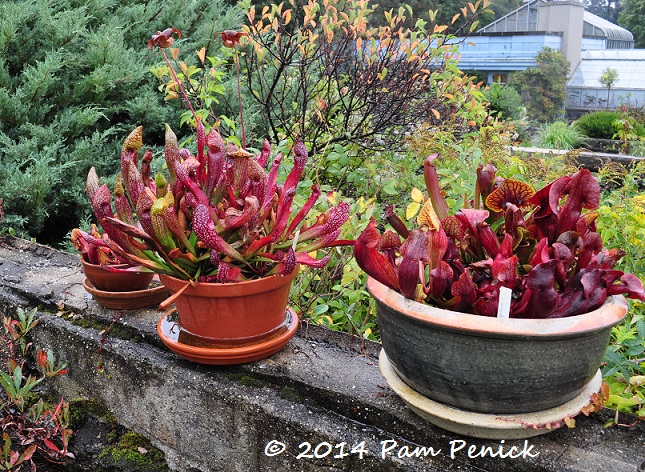
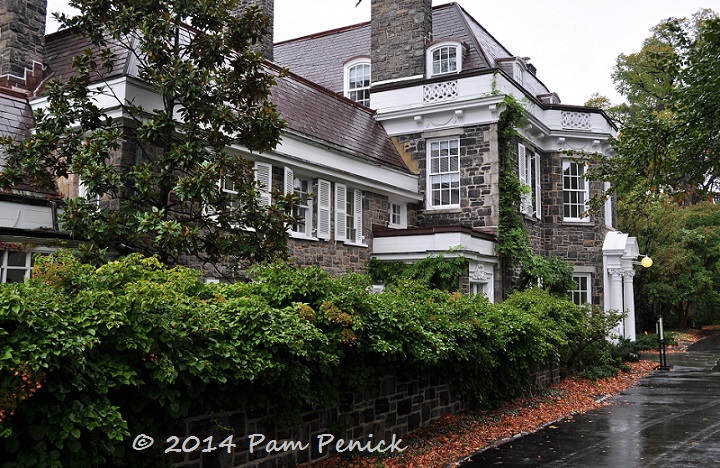
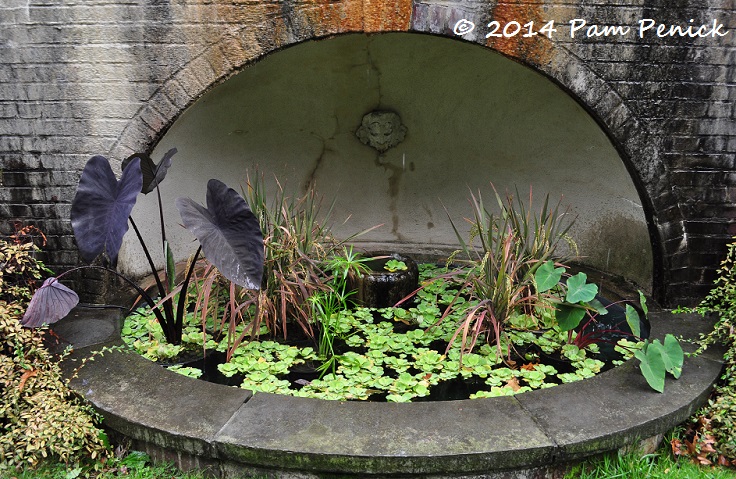
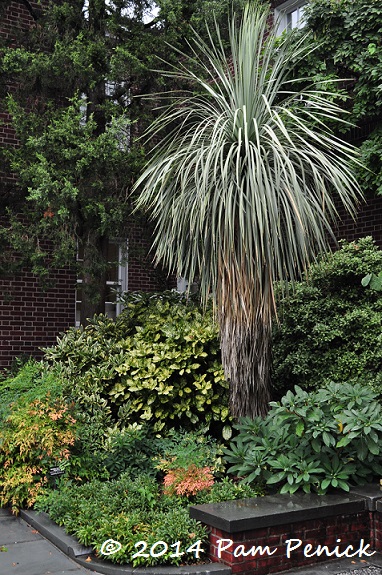
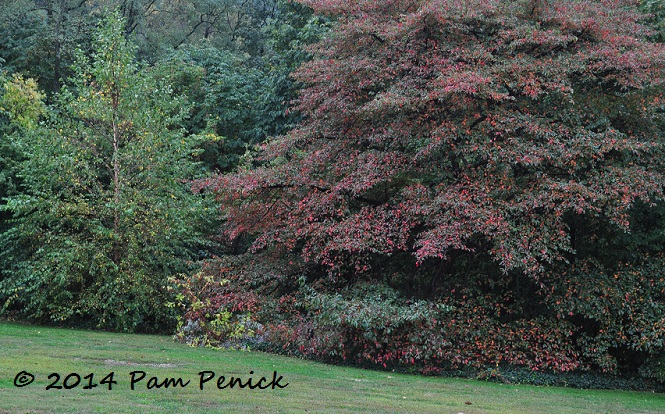
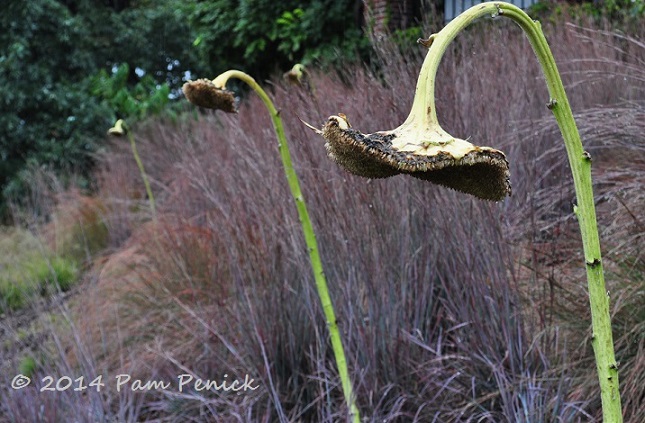
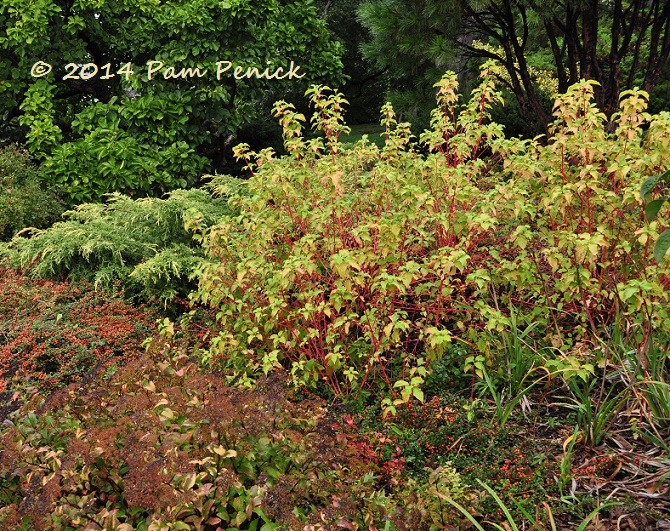
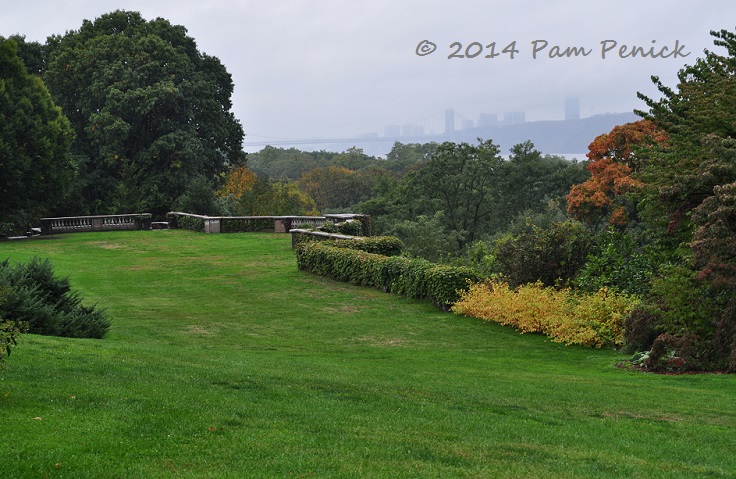
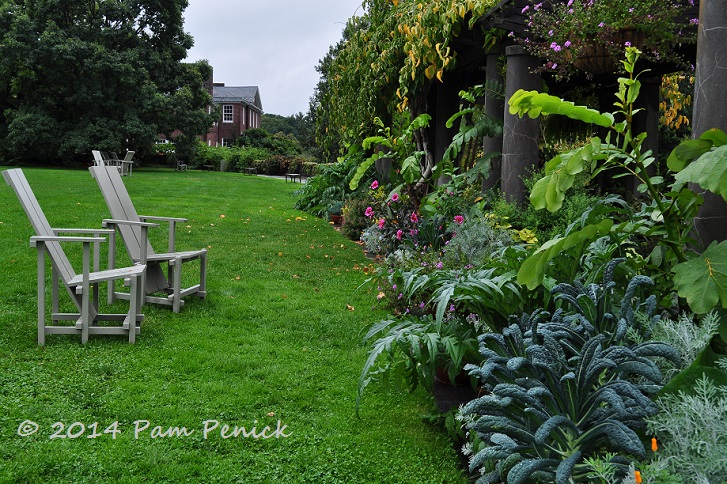
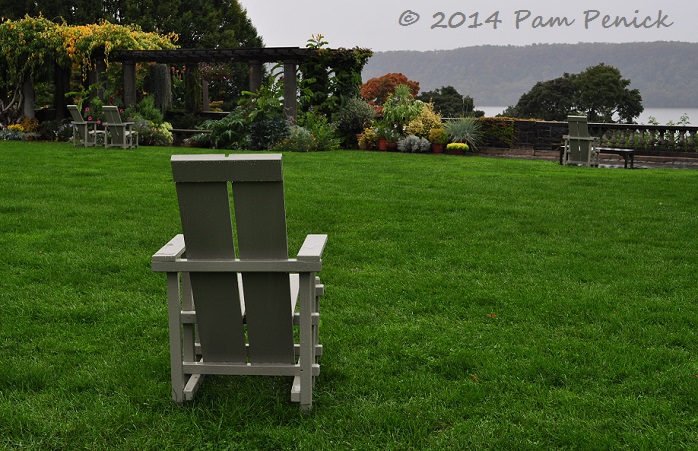
I love love love those small trees in pots and the rock gardens. Those troughs are fabulous. Elegant indeed.
I loved the troughs and wondered whether they made them or bought them. —Pam
P.S. I think your daughter should get extra credit to be out in the rain all day with her Mom. She is a special flower.
She is, Lisa. And she got a few milkshakes during this trip. And she got to miss a day of school. 😉 —Pam
This was a great educational trip. Well worth missing school.
Beautiful! Sometimes I forget how lush a garden can be with unlimited amounts of rain and real seasons to work with. Here in the Rio Grande Valley of Texas, we have hot and dry, and less hot and less dry.
I hear you, Debi. Austin is the same way, and we’ll never have gardens that look as lush as these. And that’s OK. We have a look that is unique, and we know we’re tougher gardeners for the challenges we face, right? At least that’s what I tell myself whenever envy rears its head. Plus we have lovely winters! 🙂 —Pam
I should know not to doubt you when you say things will get even better. I’l be watching for some Yuccas to be going Pow Pow Pow! in your garden. The inspirations to be drawn from this garden are too numerous to mention, as are the turns of phrase, like “chorus of cobras”
I just happen to have some POWs in mind for behind my new stucco walls, Ricki! —Pam
Oh my gosh! What a gorgeous place. I love it all, but of course we especially notice what we’d like to incorporate into our own gardens which for me would be those succulent troughs with bonsais near by.
Thank you for your always lovely photos!
Those troughs were wonderful, Ragna. So textural, and somehow both classic and modern in their modular arrangement. —Pam
What a remarkable collection of plants. I was surprised to see even a Boophane disticha on the stone steps heading to the alpine garden.
I wondered what that was, Kris. Thanks for the ID. —Pam
Boophane is South African. I have one, potted to go with me and looking disgruntled and browned off – it hasn’t flowered for me yet. The leaves are worth a place in the garden!
Ah, thank you Kris! Boophane disticha, then. What a star of a plant that one is – even in the midst of so many spectacular plants…
Those troughs are VERY enticing and I’m guessing more than one of your readers will be emulating that approach and look. I know I’ll be showing that photo to The Hub and wondering aloud where and how we could pull something similar off. Wasn’t it Rock Rose who has the recipe for hypertufa on her blog? I’m off to check, but first?
I admit I was thinking to myself “oh too bad Pam’s stucco work is completed already or she could have them build her a series of stucco troughs that she could paint different colors!”. Maybe next year?
Yes, I think Rock Rose did have some info about making hypertufa pots. And I’ll leave that creative endeavor to you, Deb! My projects are emphatically done for the time being. 🙂 —Pam
That was a lovely comment about the yucca/nolina — I’m a Californian living in Austin and I though I doubt I’ll ever return to the West, I still get a thrill when I see a plant that reminds me of home. For me, a big part of gardening is a process of falling in love more deeply with beautiful things that I already know and appreciate. It’s as exciting as finding new plants for a new climate.
And, have you seen Ian Young’s bulb log? He’s the king of troughs.
Thanks for your comment, Helen. There’s a lot of sweet nostalgia in gardening, as well as the excitement of the new, as you point out. No, I haven’t seen Ian’s bulb log. I’ll have to take a look. —Pam